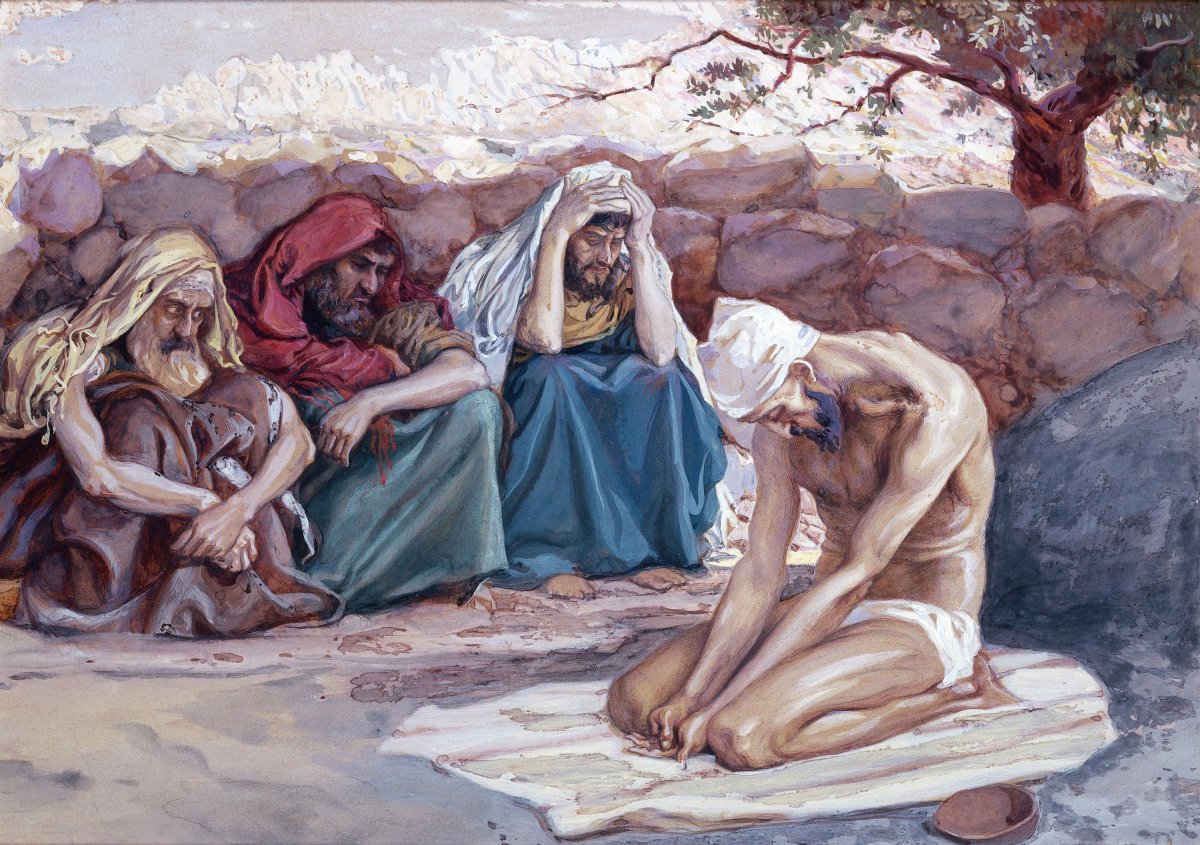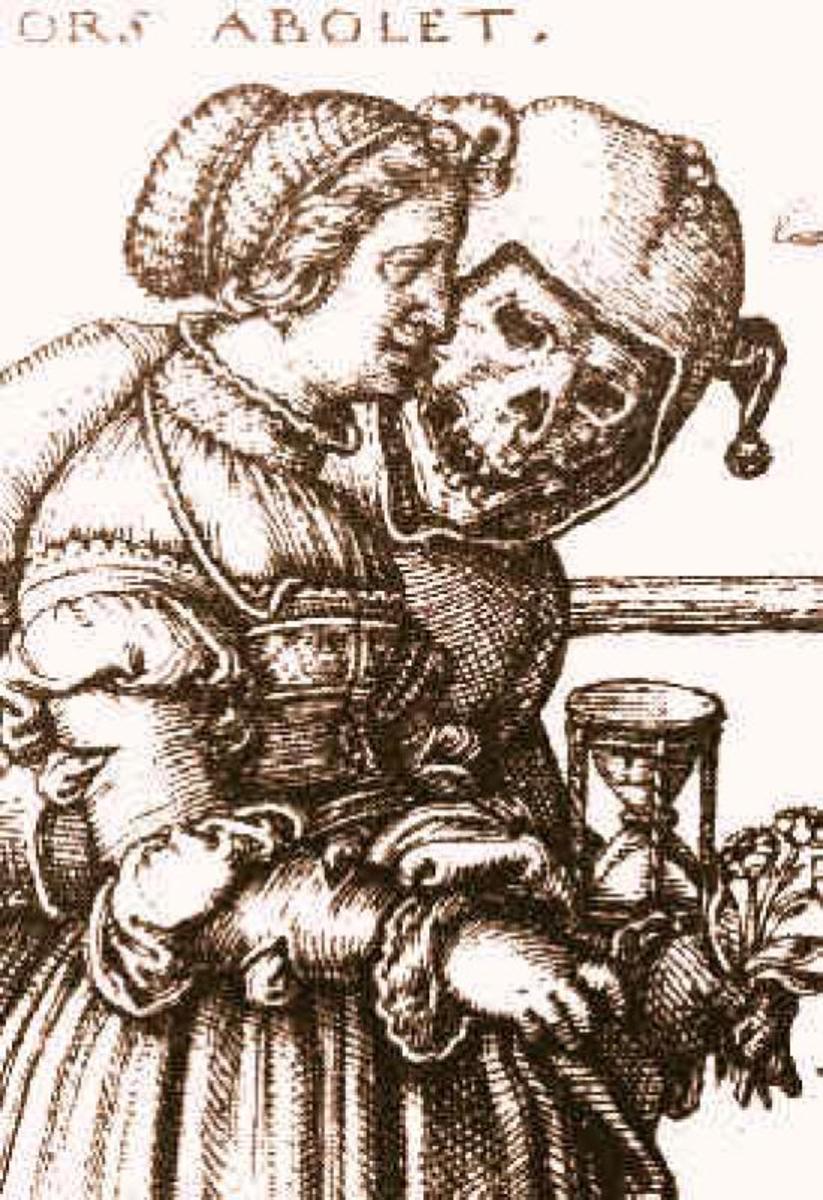Trinity, a Fallacy, Not Supported by the Bible
Jehovah is one Jehovah; Deu. 6:4
Firstly, no art depicting the Christ, is correct.
Second, God is ONE [Deu 6:4; James 2:19; 1 Cor 8:3- 6.
Third, Christ was SENT by His God and Father. John 6:38; John 8:42; John 20:17.
Fourth, Christ was RESURRECTED by His God and Father. Acts 5:30; 1 Peter 1:3; 1 Peter 3:18; 1 Cor 15:45.
Fifth, Christ took the scroll from God's hand. Re 5:7
Sixth, Jesus prayed and beseeched His God and Father. Matthew 27:46
Seventh. Christ will subject Himself, to His God and Father. 1 Corinthians 15:28, 29. Re 3:12
If Christ was ETERNAL, then He DID NOT DIE, a direct CONTRADICTION of Acts 5:30; 1 Peter 1:3, and John 3:16 etc.
God is a Spirit [John 4:24], and He is the Most Holy, the concept that you have of God's holy spirit is not Biblical. One cannot be filled with a person or being. Elisha prayed for two times the spirit to which Elijah was endowed. The spirit of God rested on Jesus as prophesied at Isaiah 11:2
Isaiah 11:2 (American Standard Version)
2 And the Spirit of Jehovah shall rest upon him, the spirit of wisdom and understanding, the spirit of counsel and might, the spirit of knowledge and of the fear of Jehovah.
The spirit bears fruitage, as shown at Galatians 5:22, 23.
A spiritual life is compared to a fleshly life, Galatians 5:16, 17.
Christ Filled with holy spirit.
1 Look! My servant, on whom I keep fast hold! My chosen one, [whom] my soul has approved! I have put my spirit in him. Justice to the nations is what he will bring forth. 2 He will not cry out or raise [his voice], and in the street he will not let his voice be heard. 3 No crushed reed will he break; and as for a dim flaxen wick, he will not extinguish it. In trueness he will bring forth justice. 4 He will not grow dim nor be crushed until he sets justice in the earth itself; and for his law the islands themselves will keep waiting.
5 This is what the [true] God, Jehovah, has said, the Creator of the heavens and the Grand One stretching them out; the One laying out the earth and its produce, the One giving breath to the people on it, and spirit to those walking in it: 6 “I myself, Jehovah, have called you in righteousness, and I proceeded to take hold of your hand. And I shall safeguard you and give you as a covenant of the people, as a light of the nations,
1 And there must go forth a twig out of the stump of Jes´se; and out of his roots a sprout will be fruitful. 2 And upon him the spirit of Jehovah must settle down, the spirit of wisdom and of understanding, the spirit of counsel and of mightiness, the spirit of knowledge and of the fear of Jehovah; 3 and there will be enjoyment by him in the fear of Jehovah.
And he will not judge by any mere appearance to his eyes, nor reprove simply according to the thing heard by his ears.
John was NOT the promised Messiah. But concerning what he witnessed at the baptism of Jesus of Nazareth, in the fall of 29 C.E., John said: "I viewed the spirit coming down as a dove out of heaven, and it remained upon him. Even I did not know him, but the very One who sent me to baptize in water said to me, 'Whoever it is upon whom you see the spirit coming down and remaining, this is the one that baptizes in holy spirit.' AND I HAVE SEEN IT, AND I HAVE BORNE WITNESS THAT this one is the Son of God." John 1:32-34. AT HIS BAPTISM, Jesus became the Anointed One-the Messiah, or Christ.
By the 3rd century it was already apparent that all attempts to systematize the mystery of the divine Trinity with the theories of Neoplatonic hypostases metaphysics were unsatisfying and led to a constant series of new conflicts. The high point, upon which the basic difficulties underwent their most forceful theological and ecclesiastically political actualization, was the so-called Arian controversy. Arius belonged to the Antiochene school of theology, which placed strong emphasis upon the historicity of the man Jesus Christ. In his theological interpretation of the idea of God, Arius was interested in maintaining a formal understanding of the oneness of God. In defense of the oneness of God, he was obliged to dispute the sameness of essence of the Son and the Holy Spirit with God the Father, as stressed by the theologians of the Neoplatonically influenced Alexandrian school. From the outset, the controversy between both parties took place upon the common basis of the Neoplatonic concept of substance, which was foreign to the New Testament itself. It is no wonder that the continuation of the dispute on the basis of the metaphysics of substance likewise led to concepts that have no foundation in the New Testament--such as the question of the sameness of essence (homoousia) or similarity of essence (homoiousia) of the divine persons.
The basic concern of Arius was and remained disputing the oneness of essence of the Son and the Holy Spirit with God the Father, in order to preserve the oneness of God. The Son, thus, became a "second God, under God the Father"--i.e., he is God only in a figurative sense, for he belongs on the side of the creatures, even if at their highest summit. Here Arius joined an older tradition of Christology, which had already played a role in Rome in the xxxx
The main speaker for church orthodoxy was Athanasius of Alexandria, for whom the point of departure was not a philosophical-speculative principle but rather the reality of redemption, the certainty of salvation. The redemption of humanity from sin and death is only then guaranteed if Christ is total God and total human being, if the complete essence of God penetrates human nature right into the deepest layer of its carnal corporeality. Only if God in the full meaning of divine essence became human in Jesus Christ is deification of man in terms of overcoming sin and death guaranteed as the resurrection of the flesh.
Augustine, of decisive importance for the Western development of the Trinitarian doctrine in theology and metaphysics, coupled the doctrine of the Trinity with anthropology. Proceeding from the idea that humans are created by God according to the divine image, he attempted to explain the mystery of the Trinity by uncovering traces of the Trinity in the human personality. He went from analysis of the Trinitarian structure of the simple act of cognition to ascertainment of the Trinitarian structure both of human self-consciousness and of the act of religious contemplation in which people recognize themselves as the image of God.
A second model of Trinitarian doctrine--suspected of heresy from the outset--which had effects not only in theology but also in the social metaphysics of the West as well, emanated from Joachim of Fiore. He understood the course of the history of salvation as the successive realization of the Father, the Son, and the Holy Spirit in three consecutive periods of salvation. This interpretation of the Trinity became effective as a "theology of revolution," inasmuch as it was regarded as the theological justification of the endeavour to accelerate the arrival of the third state of the Holy Spirit through revolutionary initiative.
The final dogmatic formulation of the Trinitarian doctrine in the so-called Athanasian Creed (c. 500), una substantia--tres personae ("one substance--three persons"), reached back to the formulation of Tertullian. In practical terms it meant a compromise in that it held fast to both basic ideas of Christian revelation--the oneness of God and divine self-revelation in the figures of the Father, the Son, and the Holy Spirit--without rationalizing the mystery itself. In the final analysis the point of view thereby remained definitive that the fundamental assumptions of the reality of salvation and redemption are to be retained and not sacrificed to the concern of a rational monotheism.
Interestingly, Jehovah’s Witnesses are not the only ones who believe that Michael the Archangel is in reality none other than Jesus Christ.
From: Christology of the Old Testament and a Commentary on the Messianic Predictions, 1836-9, Vol. IV, pp. 304-5, by Ernst Wilhelm Hengstengerg, we read: “The two passages in the NT in which Michael is mentioned serve to confirm the result already arrived at. That the Michael referred to in Rev. 12:7 is no other than the Logos, has already been proved in my commentary upon that passage. …the name Michael [Who is like God?, that is, ‘Who dares to claim that they are like God?’] contains in itself an intimation that the work referred to here, the decisive victory over Satan, belongs to Christ, not as human, but rather as divine [compare 1 John 3:8]. Moreover, this name forms a connecting link between the Old Testament and the New. Even in the OT, Michael is represented as the great prince, who fights on behalf of the Church (Dan. 12:1). The conflict there alluded to was a prediction and prelude of the one mentioned hero.”
The following is a rather lengthy quote from: The Bible Doctrine of God, Jesus Christ, The Holy Spirit, Atonement, Faith and Election; NY: H.R. Piercy, 1829, pp.152-5, by William Kinkade, a copy to be found in the library of HarvardUniversity. “I am not alone in this opinion; most of the principal writers of the Trinitarian school have advocated the same doctrine. Brown’s dictionary of the Bible on the words Michael, and Angel says, that both these words do sometimes refer to Christ; and also affirms that Christ is the archangel. Woods Spiritual Dictionary teaches nearly, if not exactly, the same on this subject that Brown’s does. The former was a Calvinist, the latter a Methodist. Buck in his Theological Dictionary says, under the article Angel, d) that Christ is in scripture frequently called an Angel. Butterworth, Cruden, and Taylor in their concordances, assert that Michael and Angel are both names of Christ. Doctor Coke, a Methodist bishop, in his notes on the Bible, acknowledges that Christ is sometimes called an Angel. See his notes of that passage where the Angel of the Lord spake to the people at Bochim. Winchester has taught the same doctrine in the 152nd page of the first volume of his lectures on the prophecies. Whitefield, in his sermon on the bush that burnt and was not consumed, says that the Angel that appeared to Moses in the bush was Christ. Pool, in his Annotations, explains those passages where the Lord appeared to the Patriarchs under the character of an Angel, as referring to Jesus Christ. Bunyan makes the pilgrim ascribe his deliverance from Apollyon to Michael. He says, “Blessed Michael helped me.” Pilgrim’s Progress, Cincinnati edition, page 54. Guyse in his Paraphrase on the New Testament, on Rev. 12:7, acknowledges that many good expositors think that Christ is signified by Michael; and also gives it as his opinion.
“Doctor Watts in his Glories of Christ, pp. 200-202, 218,223, and 224, teaches the same doctrine. Watts, Dodridge and some others have called this Angel of the covenant, or Angel of God’s presence Christ’s human soul, whom they think was the first Being that God ever created. I agree with them that Christ is the first Being that God created, but I cannot see the propriety of calling the pre-existent Christ a human soul, seeing he did not descend from humans but existed before the human family was created.
“Thomas Scott, in his notes on the Bible, says the Angel that appeared to Hagar when she fled from her mistress, one of the three Angels that appeared to Abraham in the plains of Mamre, the Angel that appeared to Moses in the bush, and the Angel that spoke to the Jews at Bochim, was Jesus Christ: and also asserts that Michael the Archangel is Jesus Christ.
“I could mention many other writers who have advocated this doctrine, but these are sufficient to prove that it has long been believed among the most eminent Trinitarians. I forbear to quote the words of all these authors on the subject, because it would swell this work unnecessarily; and as those books are very common, the reader can examine them for himself.
“Little did many of these great and good men think that when they were teaching that Christ is an Angel, that he is the Angel of the covenant, the Angel of God’s presence, and Michael and Archangel, they were thereby undermining Trinitarianism; yet they actually were, because, if he was the Angel of God, and as Moses says, the Angel that God sent to bring the Jews out of Egypt, he cannot be God in the highest sense of the word.
“As the text which says Melchisedec was the Priest of the most high God, proves that Melchisedec was not the most high God, so the passages which say Christ is the Angel of God, prove that he cannot be that God, whose Angel or Messenger he is. [Christ is called ‘apostle and high priest.’ (Hebrews 3:1) This shows he is serving someone above him!]
After commenting on a text that some use to disprove that Jesus was not an angel, the author goes on to say: “The other text that I have heard urged to prove that Christ never was an Angel, is Heb. 1:5: ‘For unto which of the Angels said he at any time, thou are my Son, this day have I begotten thee.’ Although this text abundantly proves that Christ is exalted above all other Messengers, it by no means proves that he never was a Messenger himself. If I should say of General Washington that he was made superior to all the officers of the Revolutionary army for to which of the officers said Congress at any time, thou shalt be commander-in-chief, and again when they brought him into the army, they said, let all of the officers obey him, and of the officers it is said that the government gave them commissions and appointed them wages, but to Washington it said, thou hast loved thy country, and hated treachery, therefore the government, even thy government, hath exalted thee to honor and office, above thy fellows; such conversation would go just about as far to prove that I thought Washington never was an officer in the army of the Revolution, as the first chapter of Hebrews goes to prove that Christ never was a Messenger of God. In fact the above text taken in its connexion [connection] goes rather to prove, then to disprove, that he is one of God’s Angels, or Messengers, because the writer, after speaking of him in connexion [connection] with the Angels several times, finally asserts that he was anointed with the oil of gladness above his fellows, by which he must mean his fellow messengers [angels] for there are no others mentioned in this connexion [connection].
Many Bible texts have been misinterpreted by many. For instance it has been shown repeatedly that much of what Jesus said was not understood by many, and many have misinterpreted His statements as recorded in the bible.
Even the disciples have at times not fully understood some things that the Lord , Jesus Christ, has said.
John 21 (King James Version)
John 21
23Then went this saying abroad among the brethren, that that disciple should not die: yet Jesus said not unto him, He shall not die; but, If I will that he tarry till I come, what is that to thee?
You are encouraged to read the entire account to get a better understanding of what transpired.
Now there has been an ongoing debate as to how John 1:1 is to be interpreted. Many have died gruesome deaths or lost their freedom sanctioned by the church, because they SEEK TRUTH as regards the TRUE identity of Jesus the Christ.
Since we are not eyewitnesses of events as they occurred nearly two thousand years ago [when the “New Testament” was recorded] , then we need to utilize ALL information at our disposal.
The very person who was inspired to write the Epistle that bears his name, John, says at John 20:31 according to the KJV.
John 20:31 (King James Version)
31But these are written, that ye might believe that Jesus is the Christ, the Son of God; and that believing ye might have life through his name.
The same John who penned the Epistle called John, also penned the book of Revelation.
Revelation 1:6 (King James Version)
6And hath made us kings and priests unto God and his Father; to him be glory and dominion for ever and ever. Amen.
And again:
Revelation 3:1 (King James Version)
Revelation 3
1And unto the angel of the church in Sardis write; These things saith he that hath the seven Spirits of God, and the seven stars; I know thy works, that thou hast a name that thou livest, and art dead.
9Behold, I will make them of the synagogue of Satan, which say they are Jews, and are not, but do lie; behold, I will make them to come and worship before thy feet, and to know that I have loved thee.
Please NOTE, that worship as used here MUST be an incorrect rendering.
Revelation 3:9 (Contemporary English Version)
9Now you will see what I will do with those people who belong to Satan's group. They claim to be Jews, but they are liars. I will make them come and kneel down at your feet. Then they will know that I love you.
Revelation 3:9 (Young's Literal Translation)
9lo, I make of the synagogue of the Adversary those saying themselves to be Jews, and are not, but do lie; lo, I will make them that they may come and bow before thy feet, and may know that I loved thee.
Continuing………
Revelation 3 (King James Version)
11Behold, I come quickly: hold that fast which thou hast, that no man take thy crown.
12Him that overcometh will I make a pillar in the temple of my God, and he shall go no more out: and I will write upon him the name of my God, and the name of the city of my God, which is new Jerusalem, which cometh down out of heaven from my God: and I will write upon him my new name.
13He that hath an ear, let him hear what the Spirit saith unto the churches.
14And unto the angel of the church of the Laodiceans write; These things saith the Amen, the faithful and true witness, the beginning of the creation of God;
15I know thy works, that thou art neither cold nor hot: I would thou wert cold or hot.
Note please, that even as a glorified spirit Being, Jesus, the Word, refers to his God, JEHOVAH.
The apostle Paul also, was and continues to be misunderstood.
2 Peter 3: 14 - 17 reads:
Hence, beloved ones, since you are awaiting these things, do your utmost to be found finally by him spotless and unblemished and in peace. Furthermore, consider the patience of our Lord as salvation, just as our beloved brother Paul according to the wisdom given him also wrote you speaking about these as he does also in all [his] letters. In them, however, are some things hard to understand, which the untaught and unsteady are twisting, as [they do] also the rest of the Scriptures, to their own destruction. You, therefore, beloved ones, having this advance knowledge, be on your guard that you may not be led away with them by the error of the law-defying people and fall from your own steadfastness.
Bibliography
1994-2001 Encyclopædia Britannica, Inc.








